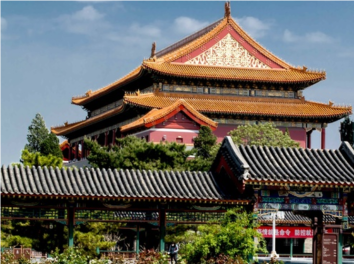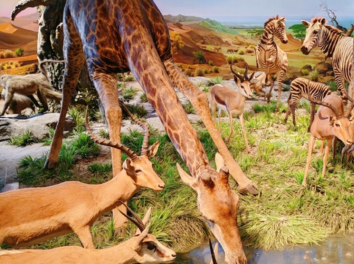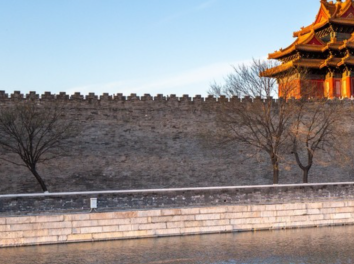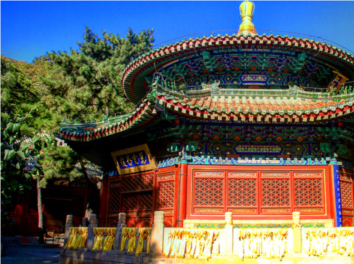Tanzhe Temple
Historical Origin:Tanzhe Temple was first built in the first year of Yongjia in the Western Jin Dynasty (307 AD). It is the oldest temple in the Beijing area with a history of more than 1,700 years. Its original name was Jiafu Temple, and it has gone through several name changes. It was renamed Longquan Temple in the Tang Dynasty, given the name Great Longevity Temple by imperial decree in the Jin Dynasty, and successively restored its old names of Longquan Temple and Jiafu Temple in the Ming Dynasty. In the Qing Dynasty, Emperor Kangxi named it "Xiuyun Temple", but because there is a dragon pool behind the temple and a paper mulberry tree on the mountain, it has been always called "Tanzhe Temple" by the people. The temple was built in the early period when Buddhism was introduced to the Beijing area of China. It experienced two "Buddhism suppressions" in the Northern Wei and Northern Zhou Dynasties and did not flourish until the Tang Dynasty.
Religious Status:As one of the important Buddhist temples in northern China, Tanzhe Temple holds an important position in the spread and development of Buddhism. Since the Tang Dynasty, it has been repaired and expanded in many dynasties, receiving support and favor from many royal family members, high-ranking officials, and noblemen. Numerous eminent monks and great masters have practiced and spread Buddhism here, and many believers have come to worship, with the incense burning continuously, and its Buddhist culture has been passed down to this day, having a profound impact on the development of Chinese Buddhism.
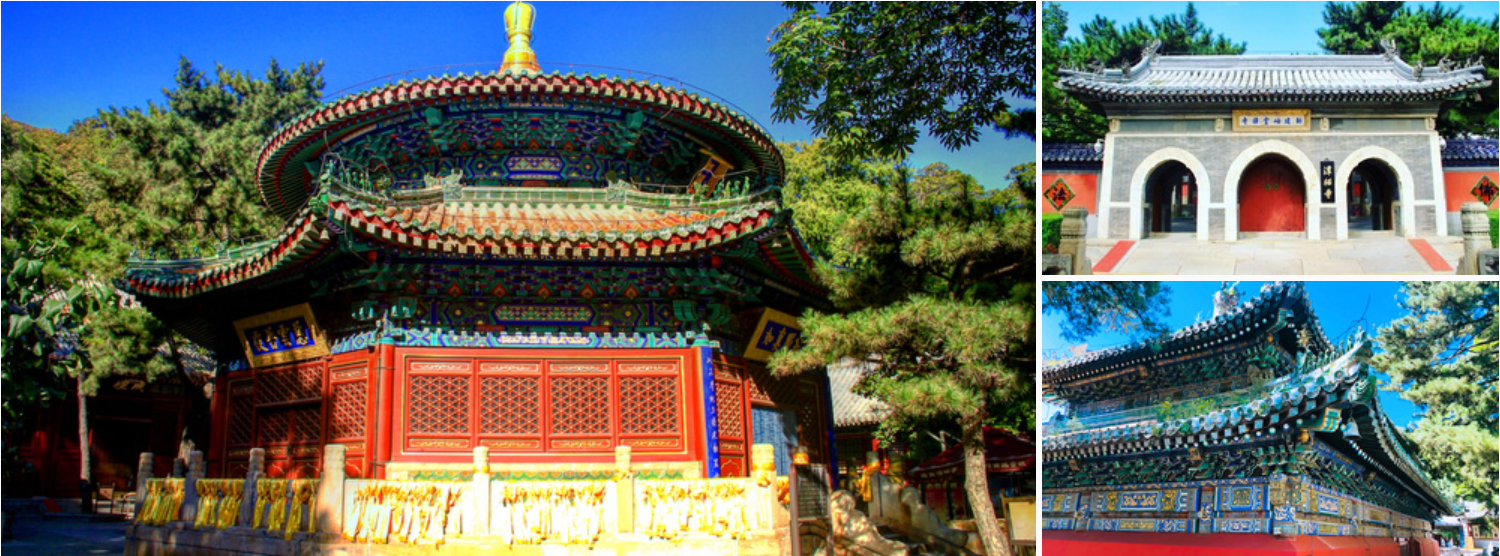
Architectural Style and Layout :
Archway:The southernmost part of the central axis is a huge wooden archway with the form of three rooms, four columns, and three floors, covered with yellow glazed tiles, and decorated with dougong under the eaves.
Mountain Gate:It is a brick and stone structure with a gable and hip roof, three bays wide, with three arched doors. The arched surfaces are all carved with white marble flowers, and there is a plaque in the middle of the central bay, which is the "Imperially Built Xiuyun Chan Temple" written by Emperor Kangxi.
Hall of the Heavenly Kings:It has three bays, a green glazed gable and hip roof, and is decorated with dougong under the eaves. There are bell towers and drum towers on both sides in front of the Hall of the Heavenly Kings. Inside the hall, on both sides, there are four huge painted statues of the "Four Heavenly Kings" about 3 meters high.
Mahavira Hall:It is the largest and most important building in the temple, with five bays, yellow glazed tiles with green edges, and dougong decorations on both the upper and lower eaves. There are gold-lettered plaques hanging on the central bays of the upper and lower eaves. The upper eaves plaque reads "Pure and Solemn", and the lower eaves plaque reads "Blessing Pearl and Wheel", both written by Emperor Qianlong.
Pilu Pavilion:It is the last pavilion-style building on the central axis, with seven bays, two floors. There are five painted gold wooden Bodhisattvas on the lower floor. Inside the hall, there is a large plaque "Round Spirit Treasure Mirror" written by Emperor Qianlong and a couplet.
Guanyin Hall:Located at the northernmost end of the left road, it has three bays, a gable and hip roof style, 41 feet high, 49 feet deep, and 60 feet wide. The roof is covered with yellow glazed tiles, and there is a moon platform in front, surrounded by white marble railings. There is a plaque "Lotus World Mercy Navigation" written by Emperor Qianlong hanging on the door lintel. In the middle of the hall, there is a painted gold statue of Guanyin Bodhisattva preaching the Dharma.
Overall Layout:The temple faces south and is backed by Baozhu Peak, with nine peaks surrounding it in a horseshoe shape. It cleverly utilizes the local natural environment, and the halls rise step by step according to the mountain terrain. The main buildings can be divided into three parts: east, middle, and west. The middle road is the central axis composed of large temple halls, the east road is mainly courtyard-style buildings, and the west road is a combination of Buddhist halls and three independent halls.
Natural Landscapes and Cultural Relics:
Ancient Trees:There are many ancient trees in Tanzhe Temple, such as the "Emperor Tree", which is more than 30 meters high and has a history of more than a thousand years. It is said that every time a new emperor ascended the throne, a new branch would grow at the bottom of the trunk of the Emperor Tree and then merge with the old trunk. There is also a thousand-year-old cypress in the abbot's courtyard on the east road, which is as old as Tanzhe Temple and has withstood thousands of years of wind and rain. More than 20 sal trees behind the Mahavira Hall form a unique scenic view with their unique pagoda-shaped flower clusters. In addition, the cypress tree and the persimmon tree growing together in the temple are called the "All Things as One Wishes" tree.
Pagoda Forest:On the southern slope of the mountain outside the gate of Tanzhe Temple, there are large and small monk pagodas built in different dynasties, divided into upper and lower pagoda yards. According to statistics, there are 75 monk pagodas remaining. Due to different dynasties of construction and different statuses of the pagoda owners, the monk pagodas have different forms and styles.
Liubei Pavilion:Located in the east road's temporary imperial palace courtyard, there are green bamboos, flowing water, green tiles, and red railings in the courtyard. In the pavilion, the center of the base is carved with a water channel made of white marble, which looks like a dragon head from the south and a tiger head from the north. Mountain spring water is introduced into the ditch. The water channel is about ten centimeters wide, and people can put wine glasses into the water channel, let them float with the water, and sit around the water channel to drink wine and compose poems.
Stone Fish:The stone fish on the northwest side of the temple is also a famous scenic spot. According to legend, touching this stone fish can dispel diseases and pray for blessings.
Cultural Inheritance and Influence:Tanzhe Temple has a profound cultural heritage, which is not only reflected in architecture, religious ceremonies, etc., but also in literary works such as poems and legends related to it. These cultural elements blend with each other to form the unique Tanzhe Temple culture. For example, the legend that "Tanzhe Temple was built before Yanjing City" reflects the important position of Tanzhe Temple in the history and culture of Beijing and also embodies people's respect and praise for this ancient temple. At the same time, as an important carrier of Buddhist culture, Tanzhe Temple has had a profound impact on the culture, art, and folk customs of the surrounding areas, promoting the exchange and integration of Buddhist culture and traditional Chinese culture123.
previous: Hongluo Temple

